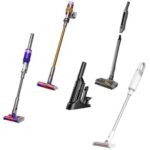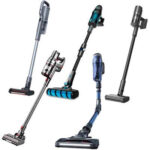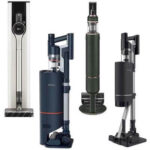Since September 1, 2014, European Union Regulation No. 665/2013 regulates the information that manufacturers must provide to consumers about vacuum cleaners. The energy label is one of its main contributions, since it helps buyers compare better..
What the energy regulations say
- To ensure energy efficiency, annual energy consumption must be less than 62 KWh/year.
- Power is limited to a maximum of 1.600 watts.
- Dust collection on carpet must be at least 70%.
- Dust collection on hard floors must be at least 95%.
What the energy regulations establish as of 01/09/2017
Starting September 1, 2017, these limits will change:
- Annual consumption will have to be less than 43 KWh/year.
- Power will be limited to 900 watts.
- Dust collection on carpet must be at least 75%.
- Dust collection on hard floors must be at least 98%.
- In addition, it will be established that the acoustic power (the noise level) must not exceed 80 decibels.
- It will also be established from that date that the useful life of the engine must be greater than 500 hours.
Which vacuum cleaners should have an energy label
Not all vacuum cleaners must have an energy label. Wet-dry vacuum cleaners, battery-powered vacuum cleaners are excluded from the regulations (robot vacuum cleaners and almost all stick vacuum cleaners are excluded, unless they are corded), outdoor vacuum cleaners and industrial vacuum cleaners.
In short, what applies to dry vacuum cleaners used for the home, plugged into the mains.
In the case of vacuum cleaners with a water filter, they do fall within this European regulation on ecological design and energy labeling as of September 2017.

UPDATE: On November 8, 2018, The General Court of the European Union annulled the Regulation on the energy labeling of vacuum cleaners, after a claim from Dyson, in the sense that the tests carried out to obtain it did not reflect the real use of a vacuum cleaner, as they did not contemplate measurements with a full tank.
Still, Some of the aspects contemplated in it, such as the reduction of the nominal power of the devices to achieve greater efficiency, remain in force, and in many devices we can still count on it for information purposes..
How has this regulation affected vacuum cleaners?
Perhaps you might think that this drop in power has also reduced the performance of the devices.
We came from vacuum cleaners that in many cases exceeded 2.000 watts, and now the limit is 1.600, and very soon at 900.
It is possible that, initially, when the energy label was implemented, a drop in performance was seen. However, Today, modern vacuum cleaners suck as well—or better—than those from a few years ago.
Rated power has more to do with consumption, and manufacturers have made an effort to design more efficient devices, which manage to suck just as well with lower consumption.
How to read the energy label
The energy label offers information on six key aspects, establishing a classification for four of them from A to G (from best to worst).
1. Energy efficiency class
This section is related to the nominal power, and, therefore, to the consumption. It goes from A to G, from lower to higher consumption, as you can see in the table. As a guide, the power range in which they operate is offered (logically, it will depend on the efficiency achieved by the manufacturer in each specific model).
ENERGY EFFICIENCY CLASS | ENERGY CONSUMPTION | power approx. |
|---|---|---|
A | 22-28 | Up to 800W |
B | 28-34 | 700 1.050-W |
C | 34-40 | 800 1.200-W |
D | 40-46 | 950 1.400-W |
E | 46-52 | 1.100 1.599-W |
F | 52-58 | 1.250 1.599-W |
G | > 58 | 1.400 1.599-W |
2. Average annual energy consumption
It is calculated for an average home of 87 square meters, with a frequency of use of 50 times a year (approximately once a week). It gives us an idea of how much we would spend annually on cleaning.
For example, for Hoover Sprint Evo SE51, Which has been the most rated bagless vacuum cleaner among the best sellers, the approximate annual cost would be, assuming a cost per KWh of 0,13 euros: 28*0,13 = 3,64 euros.
3. Dust re-emission class
It tells us how clean the air returns to the outside.. It is conditioned by two aspects, the type of outlet filter it has (whether it is HEPA or not, and what grade), and correct sealing of the device.
The total number of dust particles between 0,3 and 10 microns (a micron is one thousandth of a millimeter) absorbed by the vacuum cleaner, and the number of particles emitted by the device, are measured.
From there, a percentage is calculated (how many it emits in relation to those it absorbs), which determines the classification of the device in this section.
This depends on the dust that the vacuum cleaner emits from the outlet.. Dust re-emission has to do with the filtration system you have (whether it is HEPA or not, and to what degree) and the tightness of the vacuum cleaner., as there may be other leak points through which dust escapes.
The values range from less than 0,02% for vacuum cleaners whose dust reemission class is A, to figures greater than 1% in those of class G.
4. Sound power level
The sound power level is measured on a carpet. Indicates the sound level in decibels (to understand, the noise made by the vacuum cleaner).
To be considered very quiet, it must be at a level of 68 decibels or lower.
According to the World Health Organization (WHO), 75 decibels is the limit of the tolerable noise level. This figure is often exceeded by vacuum cleaners or mixers, for example.
5. Cleaning performance on carpets
If your home has carpets or rugs, you should consider a vacuum cleaner that shows good performance in this field (between classes A and C).
6. Cleaning performance on hard floors
It measures the amount of dust collected from a crevice. A test of two cleaning cycles is carried out on a wooden pallet surface, which has a diagonal slot, at an angle of 45º, filled with artificial dust.
At the end of each cycle, the decrease in dust in the slit is measured.








Clear, complete and very useful information. Work well done. Thank you
Thank you very much, Carlos, for visiting us, and for your encouragement.
All the best